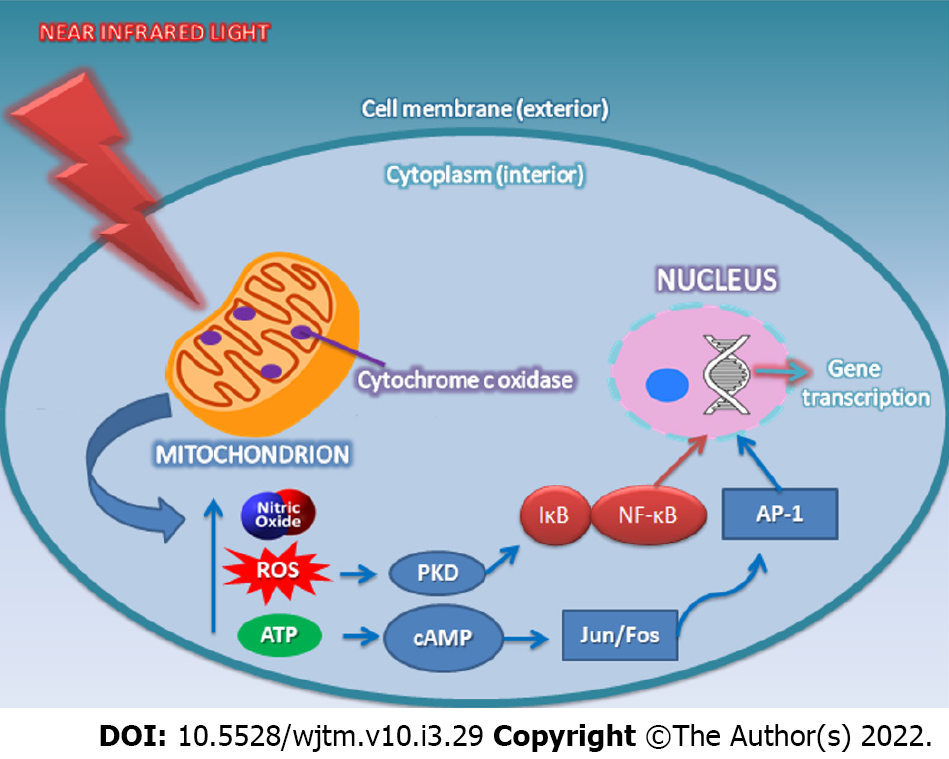The 5-Second Trick For Photobiomodulation
Table of ContentsThe Greatest Guide To PhotobiomodulationSome Known Incorrect Statements About Photobiomodulation The Photobiomodulation PDFs4 Easy Facts About Photobiomodulation Described
Laser therapy is a clinical therapy that makes use of concentrated light to stimulate a procedure called. Throughout PBM, photons enter the tissue and communicate with the cytochrome c complex within mitochondria. This communication sets off an organic cascade of occasions that results in a rise in cellular metabolism, which can in addition to accelerate the recovery process.There is consensus that the application of a healing dosage of light to impaired or dysfunctional tissue brings about a cellular reaction mediated by mitochondrial systems. Photobiomodulation. Research studies have actually revealed that these modifications can impact discomfort and inflammation, as well as, tissue repair work
Changes in ATP, responsive oxygen types and nitric oxide follow light absorption by Cc, O. These effects are redox state and dosage dependent. In hypoxic or otherwise stressed cells it has actually been shown often times that following, nitric oxide is launched, ATP is enhanced and oxidative stress and anxiety is minimized [27-31]

The 4-Minute Rule for Photobiomodulation
PBM gadgets have actually been removed for advertising and marketing by FDA via the Premarket Notification/510( k) procedure as adjunctive devices for the short-term alleviation of discomfort. These clearances were based upon the presentation of professional information to sustain such insurance claims (Photobiomodulation). In this treatment, a light resource is placed near or touching the skin, allowing the light energy (photons) to permeate tissue where it connects with chromophores located in cells resulting in photophysical and photochemical modifications that bring about alterations at the molecular, cellular and tissue levels of the body
Surprisingly, current research study shows that light can enhance performance in regular tissues and cells. The prospective applications of PBMT are numerous and are being checked out experimentally at the standard science, pre-clinical and scientific level. The existing medical usages are for the alleviation of pain and inflammation and the treatment of sporting activities injuries.

The treatment parameters and number of sessions needed for PBMT are dependent upon area and reason. PBMT normally requires more than one therapy for optimum discomfort relief.
Getting My Photobiomodulation To Work
Therapy criteria for PBMT were originally established using cells artificial insemination and in small pet models. These treatment specifications typically had a low irradiance and fluence and worked well for cutaneous applications. When medical professionals started to use PBMT to deal with frameworks that were located deeper in the body, they used these parameters with unfavorable results.
We currently comprehend that these adverse research studies was because of wrong device and therapy criteria for transcutaneous therapy of deeper frameworks. Recent advancements in laser treatment devices and even more research study right into the proper dosages have actually significantly enhanced the results of PBMT. For dealing with deep cells, the wavelength of light made use of establishes the deepness useful content of penetration right into a tissue.
As a result, it is essential that a clinician utilizes the ideal wavelength of light and parameters to treat a condition. One wavelength and one collection of treatment criteria will not work for all problems. Adverse side effects have actually not been reported from using PBMT (Photobiomodulation). Updated June 27, 2016Juanita j
Light treatment is a non-invasive treatment that functions by boosting the capability of the cell to develop power (ATP) to heal the area being treated. As an outcome, it can decrease inflammation, swelling, and pain in the location. Research in this field is increasing, with even more comprehensive research study papers linked below for those who would love to find out a lot more.
Photobiomodulation Things To Know Before You Get This
In the first experiment, Dr. Endre Mester, utilized cut rats and observing how the laser impacted their capability to grow hair contrasted to the team that was not obtaining LLLT. He located that the group of mice getting LLLT were able to grow their hair visit their website back faster than the group of mice that really did not receive LLLT (Hoon C, et al; 2012).
This therapy is called this means to distinguish the distinction in between the lasers some professions make use of to cut (eg. Low-level light treatment is pain-free, non-invasive therapy.
LLLT has a biphasic feedback, indicating that reduced dosages are usually seen to be much more helpful than higher dosages. That being stated, doses higher or lower than the optimum dosage doesn't impact (Hoon C, et al; 2012). Therefore, it can be challenging to have studies on LLLT with so several specifications.
Some business incorporated both (LED and laser) to provide a much more well-rounded treatment given that lasers can penetrate much deeper than LED and infrared light (Norman Doidge, The Mind's Means of get more Recovery, 2015). Throughout therapy, the location that is being dealt with is exposed to LED light from a Bio, Flex Laser, which is at 660 nm wavelength, adhered to by infrared light at 830-840 nm wavelength.